APNEA , AN INNER DIVE THROUGH BREATH CONTROL
Freediving is a practice that, like yoga, is based on breath control and the connection between body and mind. Suspended in the water, without breathing, you dive not only into the depths of the ocean but also into those of your being . It develops inner calm , improves lung capacity, and strengthens mental focus . By combining freediving and yoga, you explore a new dimension of well-being, where each breath is a guide to better self-knowledge . This post invites you to discover how freediving and yoga complement each other, and why this underwater discipline attracts more and more yogis and yoginis looking for a balance between inner calm and exploration of physical limits .
Written by Valentine
Collapsible content
Reading time
About 10 minutes
WHAT YOU ARE ABOUT TO DISCOVER
- Apnea: A complementary practice to yoga
- The benefits of freediving for the body and mind
- The different forms of apnea: Static, dynamic and their influence on the mind
- Freediving and Meditation: A Deep Connection Between Inner Calm and Breath Control
- How Freediving Enriches Pranayama Practice
- Introduction to freediving for yogis and yoginis
- An Inner Journey: Exploring the Body's Limits with Kindness
- Freediving as a growing global practice, combining performance and well-being
"Let's take a look"!
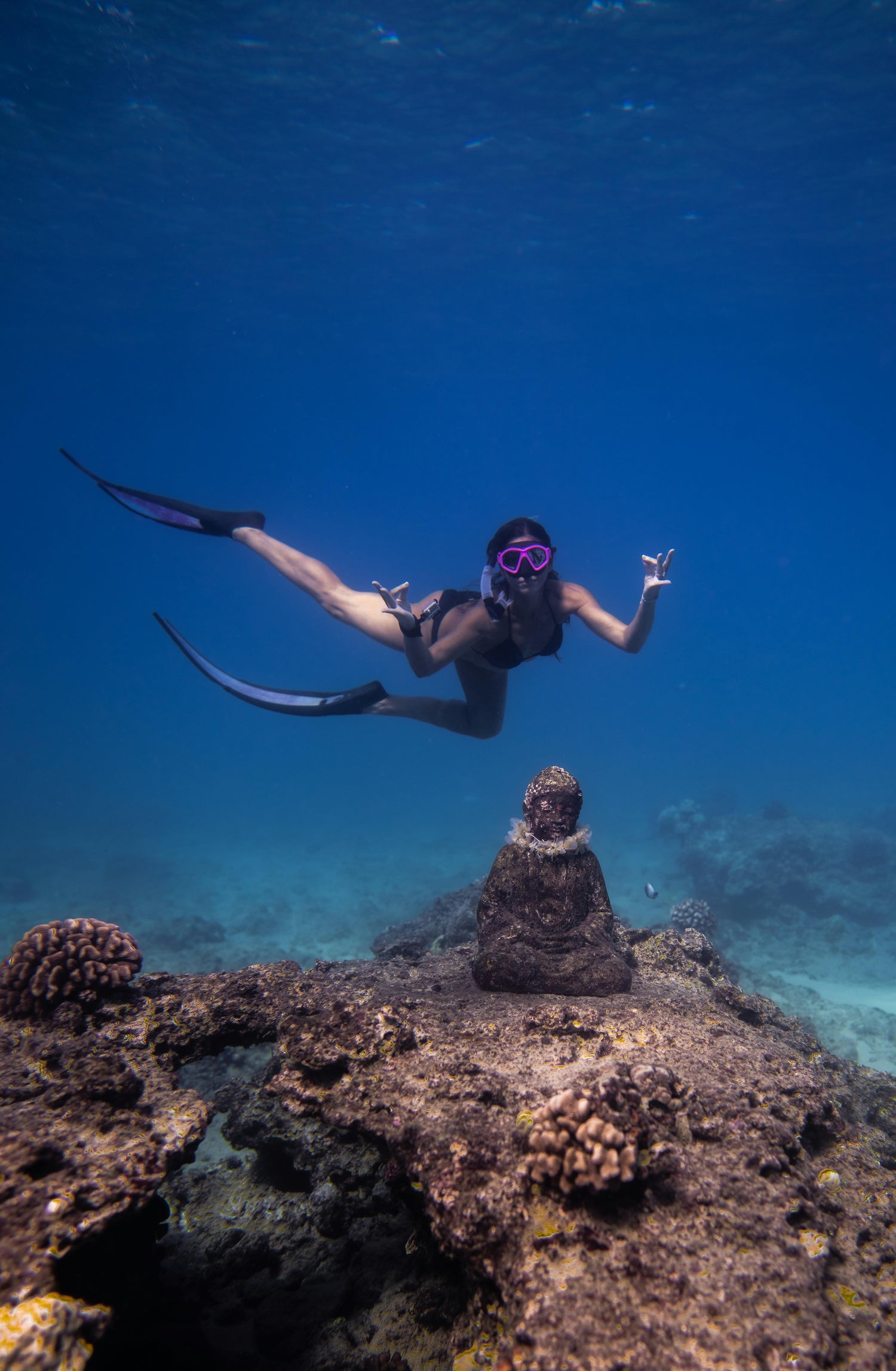
APNEA: A COMPLEMENTARY PRACTICE TO YOGA
Freediving, although practiced in water, shares a common essence with yoga: breath control and a deep connection between body and mind. Whether you're lying on your yoga mat Whether submerged in water or submerged in water, both practices require slowing down , refocusing and calming the mind. In freediving, this relationship with breath takes on an even more pronounced dimension, as the practitioner must deal with the absence of air , a state that requires complete confidence in one's body and total control of one's mind.
Imagine yourself gently diving underwater , feeling the coolness enveloping your body. In that moment, everything slows down: your heart rate decreases, your muscles relax, and your mind empties of everyday concerns. Underwater, silence is total , every movement becomes fluid and measured. You are completely absorbed in the present moment, just like during a deep meditation or pranayama session. Freediving forces you to be here and now, to listen to your body's signals and find calm in a situation that might naturally induce stress.
Let's take the example of a static apnea practitioner, lying quietly on the surface of the water. He holds his breath, but far from being an agonizing experience, it is an invitation to reconnect with himself . By observing his heartbeat slow down, he feels that sensation of fullness and letting go that many yogis seek in their postures or in meditation. Freediving then becomes a natural extension of his yoga practice, a way to further deepen his mastery of his breath and his mind.
Underwater, the perception of time changes , just as in long-held yoga postures. You learn to accept discomfort, move beyond primal fears, and find a state of inner peace . These are skills that yogis cultivate on the mat as well. By combining yoga and freediving, you enter a new dimension of mindfulness , where every breath counts, where every second underwater is a meditation in itself.
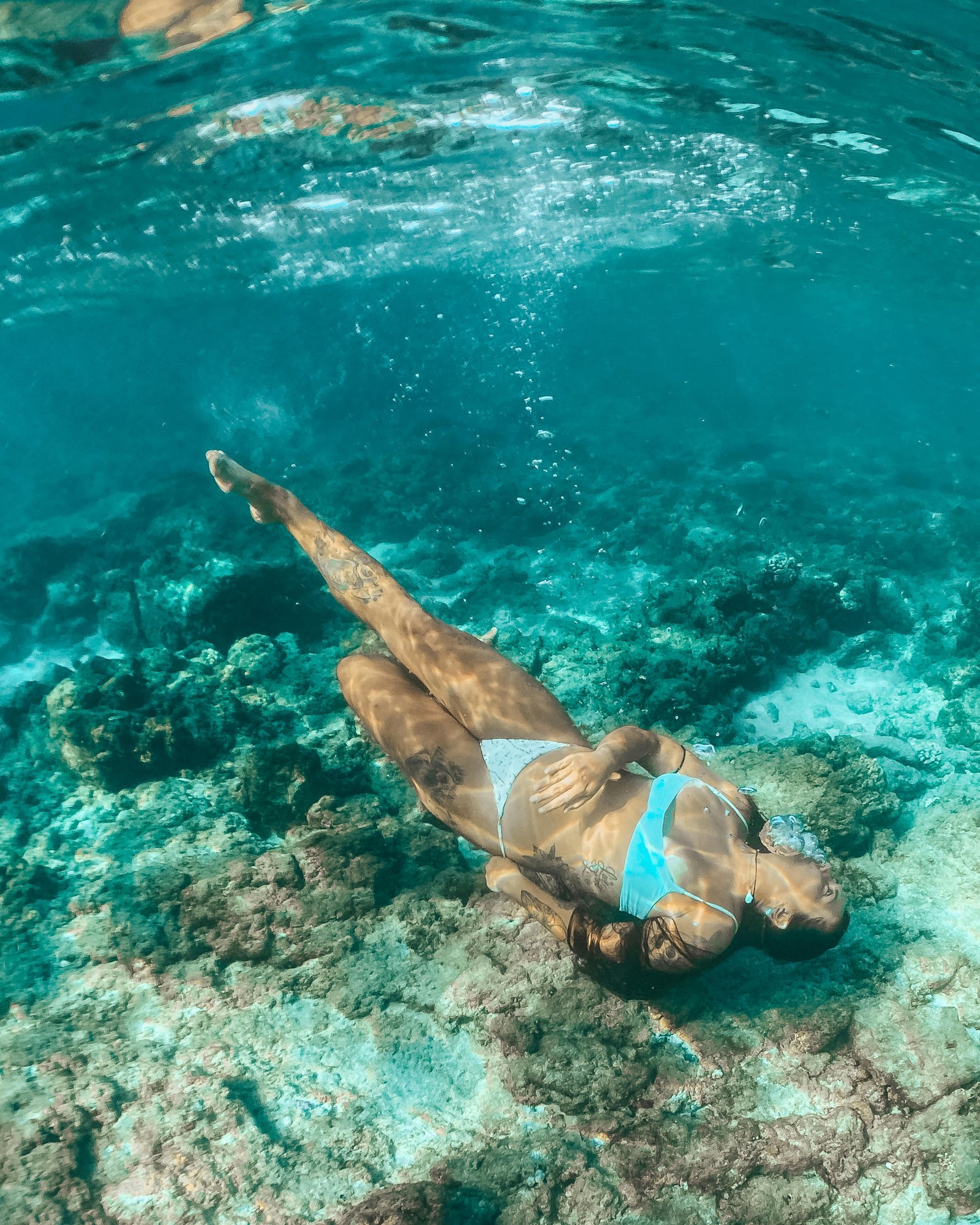
THE BENEFITS OF FREEDIVING FOR BODY AND MIND
Freediving, much more than just a physical exercise, provides profound benefits for the body and mind. On a physical level, it develops increased lung capacity . By holding your breath underwater, your lungs expand to their maximum, thus improving the elasticity of the diaphragm . For example, a regular freediver can double or even triple the length of time they can hold their breath. This breath control helps strengthen the respiratory muscles , while allowing for better oxygenation of the body during moments of recovery on the surface. Imagine returning to the surface after a dive, each breath becoming a burst of fresh air revitalizing your cells.
Additionally, freediving naturally alters your heart rate . When you're underwater, your heart instinctively slows down thanks to the immersion reflex , a natural mechanism that helps conserve oxygen for vital organs. This induces a state of deep calm , comparable to meditation. Think of that moment when, suspended in the water, you feel your entire body relax, your muscles loosen, and your thoughts calm.
On a mental level, freediving offers a unique opportunity for active meditation . The absence of air and the silence underwater force the practitioner to focus entirely on the present moment . Everyday distractions disappear and only the rhythm of your heart and the gentle pressure of the water remain. For example, during static freediving, where you float motionless on the surface of the water, the mind enters a phase of full awareness , free from the constraints of the outside world. This allows you to calm your thoughts and manage stress in a more conscious and thoughtful way.
Finally, freediving cultivates exceptional mental resilience . Each dive puts you face to face with your physical limits , but also your mental ones. For example, managing the urge to breathe, which can be perceived as an emergency, becomes an exercise in emotional control . By learning to remain calm underwater, even when the body is begging for air, you develop greater self-confidence . This self-control, combined with a deep connection with your body, makes freediving a powerful way to harmonize mind and body .
Freediving, whether practiced dynamically (moving underwater) or statically, thus becomes a transformative experience . Each immersion is an opportunity to reconnect with one's breath, body and mind, while exploring the depths of the inner ocean .
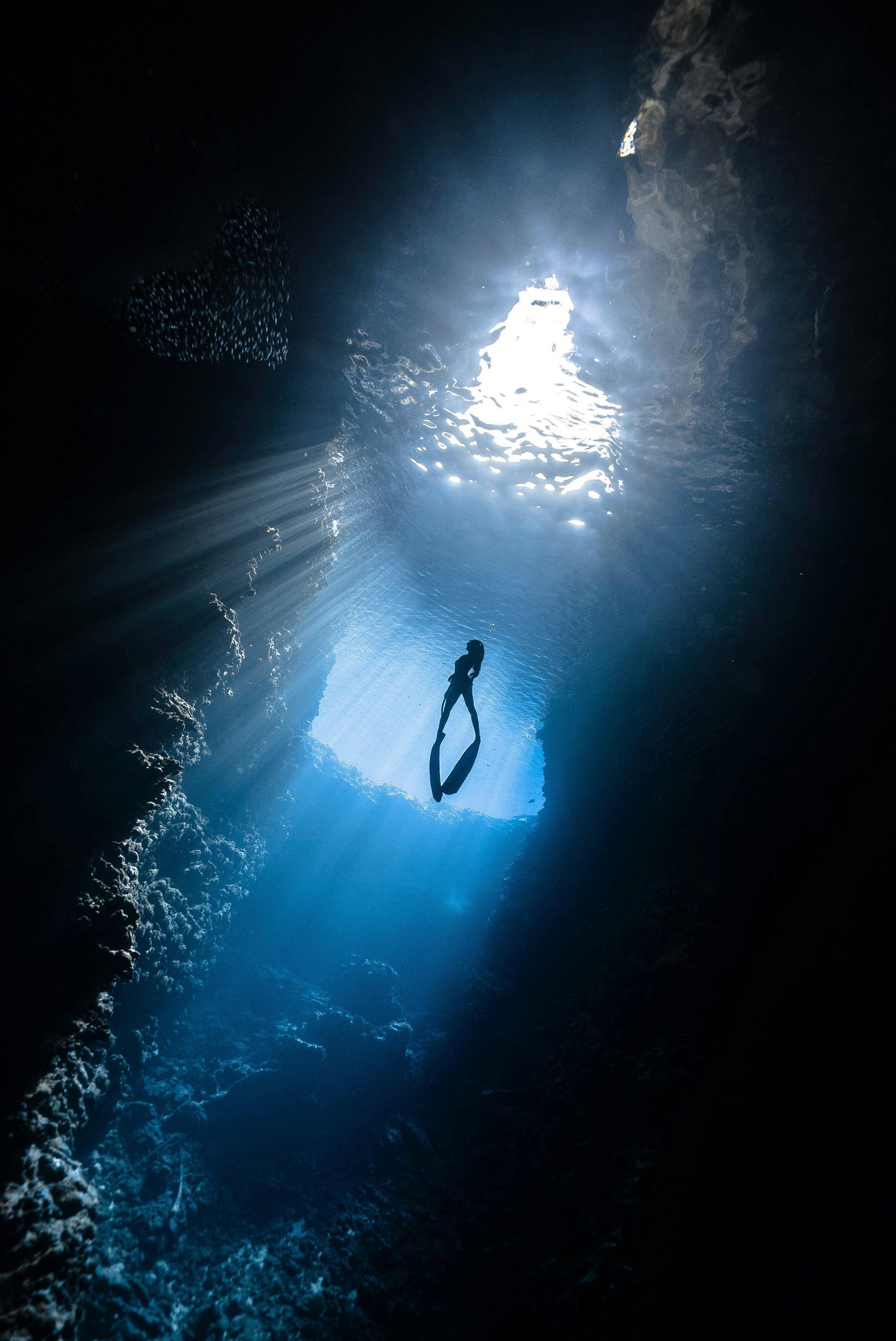
THE DIFFERENT FORMS OF APNEA: STATIC, DYNAMIC AND THEIR INFLUENCE ON THE MIND
Freediving comes in several forms, each providing specific benefits for both body and mind. The two main practices are static apnea and dynamic apnea, and while they differ in approach, they both share a profound impact on the mind and self-control.
In static apnea , the practitioner remains motionless, floating on the surface of the water or just below the surface. The goal here is not to cover a distance but to hold the breath for as long as possible while maintaining a state of inner calm . Imagine yourself lying down, floating gently on the water, eyes closed, while everything around you is silent. This practice requires intense concentration , as the absence of physical action means that your mind becomes the sole focus. You are forced to face your thoughts, the urge to breathe that gradually makes itself felt. Static apnea is an invitation to introspection , to accepting the present moment , and to managing stress in conditions that might seem uncomfortable. Mentally, it strengthens patience , letting go , and the ability to remain calm under pressure .
On the other hand, dynamic apnea involves movement underwater, whether swimming horizontally in a pool or exploring the depths of the sea. This form of apnea requires not only breath control, but also physical endurance and coordination of each movement to minimize oxygen consumption. For example, in a dynamic apnea session at sea, you might glide slowly between the reefs, each fin stroke measured to maximize efficiency. Here, the mind must remain focused on the fluidity of movements and energy management. Dynamic apnea pushes you to be in symbiosis with your environment , to anticipate your limits and adapt your actions accordingly. It requires a strong sense of adaptation and an ability to control the fears that may arise, particularly when faced with the immensity of the ocean or the feeling of confinement underwater.
Both forms of freediving have a direct impact on the mind . Whether you practice static or dynamic freediving, you will learn to better manage stress , improve your concentration , and develop a better understanding of your emotional reactions in situations where control is crucial. For example, during dynamic freediving at depth, the moment you turn around to resurface requires absolute mental clarity . You must assess your ability to reach the surface without panicking, maintaining a constant return rhythm, and keeping a calm mind.
Whether static or dynamic apnea, both practices offer lessons in resilience and help push physical limits while exploring the mental strength that resides within each of us. These forms of apnea thus become mental exercises as much as physical, where every moment underwater is an opportunity to transcend fears and strengthen mindfulness .
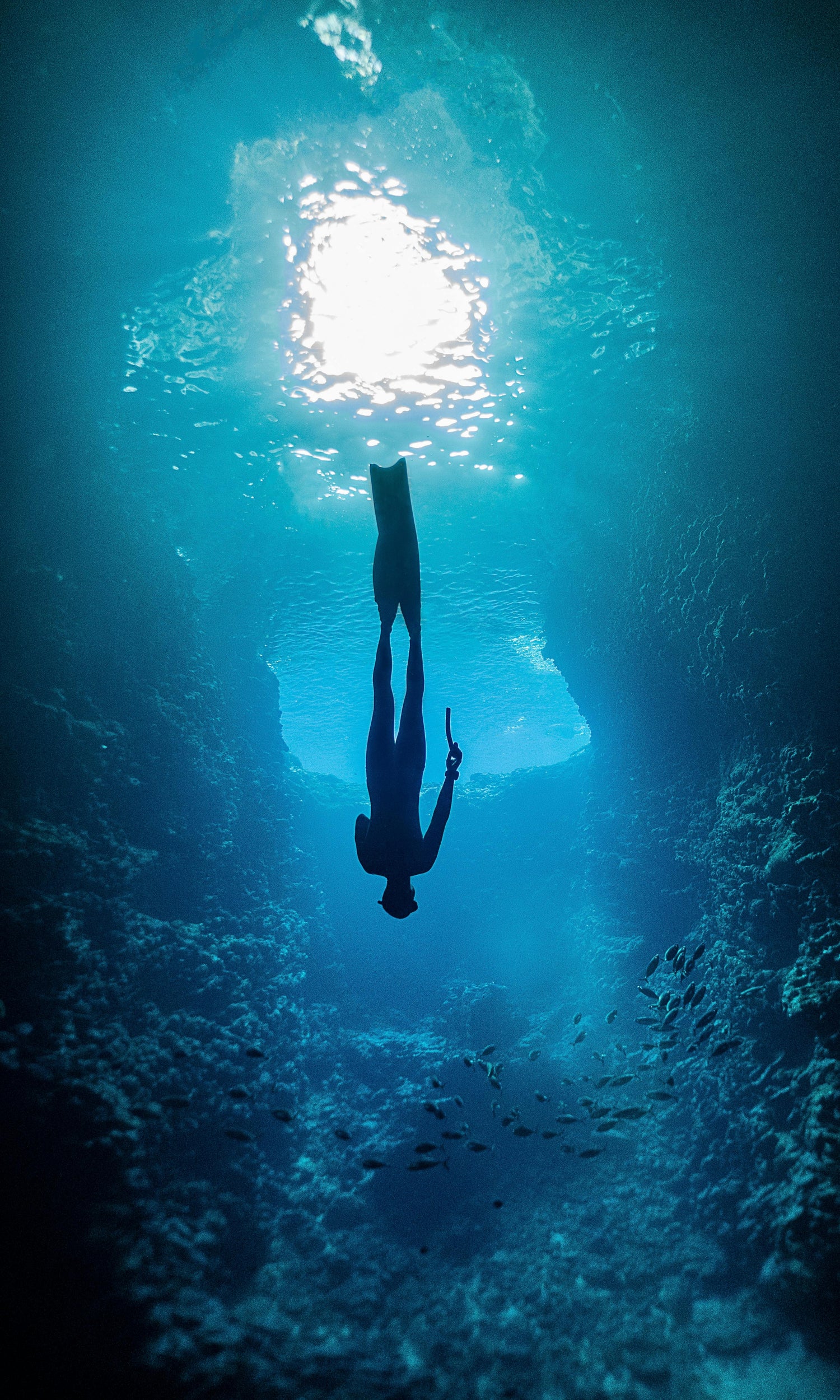
APNEA AND MEDITATION: A DEEP LINK BETWEEN INNER CALM AND BREATH CONTROL
Freediving and meditation, although practiced in different contexts, share a deep connection . Both disciplines invite inner exploration, deep calm , and fine control of the breath . Whether you sit meditating on a mat or submerged underwater, the goal remains the same: to calm the mind and control the breath to achieve a state of mindfulness .
In the practice of freediving, breath control is essential. With each dive, the practitioner must focus on their breathing before diving, slow their heart rate and prepare to hold their breath for long minutes. This mental preparation is similar to that found in meditation, where we focus on each breath to calm our thoughts and refocus on the present moment . Underwater, this control becomes even more vital: the slightest rush, the slightest tension can lead to the rapid depletion of available oxygen. Thus, freediving forces introspection and concentration that we find in meditative states.
Consider a freediver who, before each dive, sits at the water's edge for a deep breathing session. He inhales slowly, exhales just as slowly, his thoughts dissipate. When he enters the water, his mind is already calm, his worries put aside, exactly as during a guided meditation session. Every movement underwater becomes an extension of this inner tranquility. The surrounding silence, the absence of any external noise, amplifies this feeling of absolute calm , a quality that yoga and meditation practitioners also seek in their practices.
From a physiological perspective, freediving and meditation share similar effects on the body. Both practices reduce heart rate , soothe the nervous system , and help reduce stress levels. For example, when a freediver remains motionless underwater in static apnea, their body enters a deep relaxation mode, a sensation comparable to the state of well-being experienced after a long meditation. This slowing of the metabolism allows for a longer breath retention time , while maintaining an intimate connection with every sensation in the body.
In this sense, freediving is a form of active meditation , where breath control plays a central role. Underwater, you are forced to stay in the moment , as the slightest moment of distraction or panic can shatter this fragile harmony. This synergy between freediving and meditation is evident when, underwater, the mind and body work in perfect synchronization. Thoughts vanish, there is only the present moment, silence, and breath control.
So, whether you practice freediving to improve your physical abilities or as an extension of your meditation practice, these two disciplines feed off each other. By combining the breathing techniques and letting go of meditation with the discipline of freediving , you achieve a mental balance and inner calm that allows you to push your limits while remaining at peace with yourself.
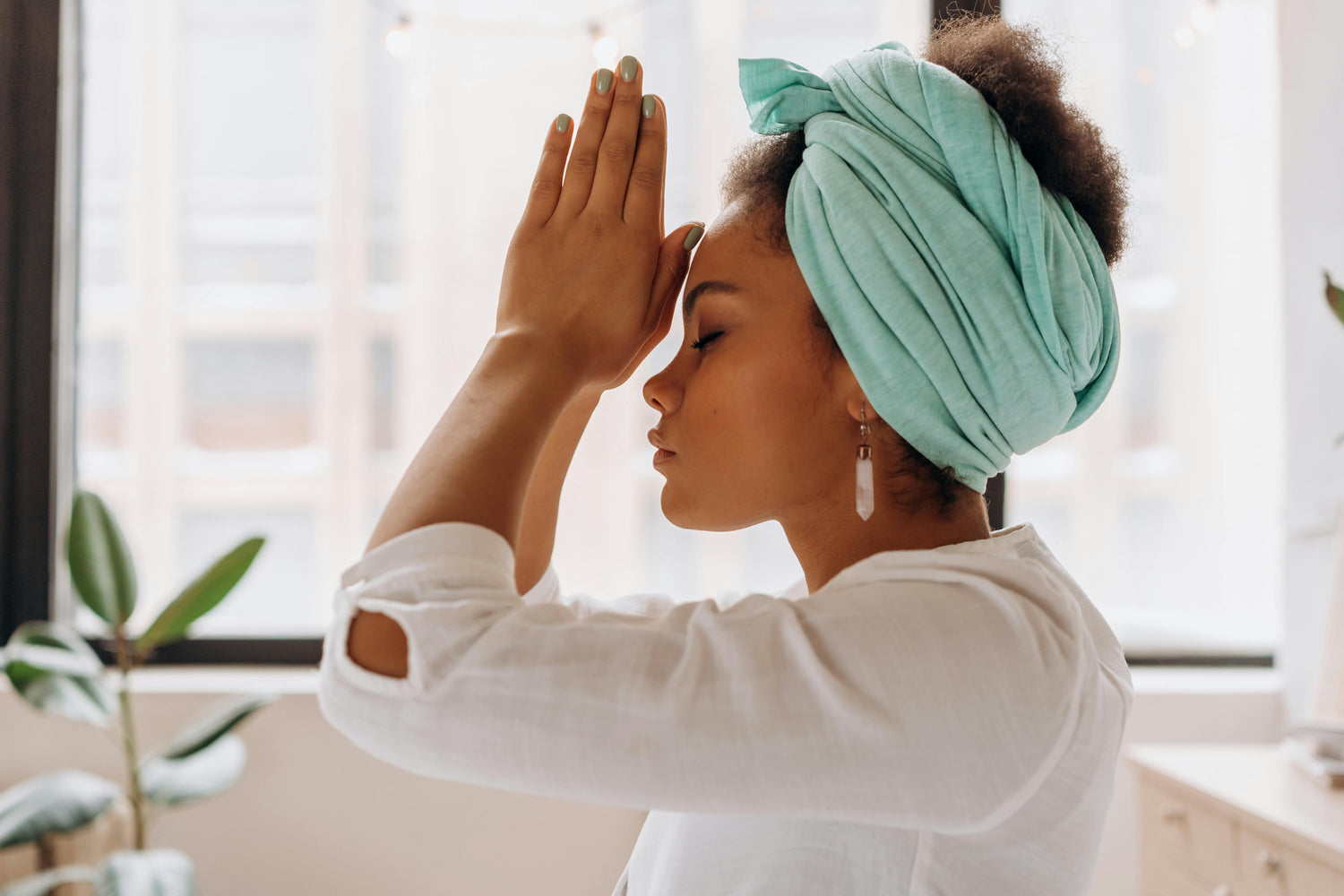
HOW APNEA ENRICHS THE PRACTICE OF PRANAYAMA
Freediving and pranayama are two disciplines closely linked by breath control . By practicing freediving, you deepen your ability to control and regulate vital energy, an essential aspect of pranayama. Freediving takes these techniques to the next level by adding a dimension of physical immersion and active oxygen management, which goes beyond the exercises performed on the mat.
In pranayama, the goal is to regulate the breath to harmonize energy, improve concentration, and achieve a state of inner calm . Freediving, through water pressure and immersion, amplifies this mastery. Imagine a freediver floating below the surface: the pressure accentuates thoracic expansion, making each breath more crucial. This deep awareness of breath enriches the practice of pranayama.
Breath retention (kumbhaka), a central element of pranayama, is directly applied in apnea. You learn to prolong this retention, to relax despite discomfort, which strengthens your mastery of pranayama. Regular practice of apnea makes you more aware of your breathing capacity , allowing for longer retention and better control on the mat.
Additionally, freediving requires an active reduction in oxygen consumption , a concept echoed in techniques such as Nadi Shodhana (alternate nostril breathing). Underwater, each breath must be calculated and precise, which refines your breathing in pranayama exercises, where the aim is also to make the breath subtle and efficient.
Finally, freediving develops an essential inner calm . In the underwater silence, the mind is forced to remain serene, even when the need to breathe becomes pressing. This calm carries over into advanced pranayama practices , such as Bhastrika , where great concentration is required.
In summary, freediving enriches pranayama by strengthening breath control , refining oxygen management, and developing deep mental calm . These two practices feed off each other, creating a stronger connection between body, mind, and breath , both on land and underwater.
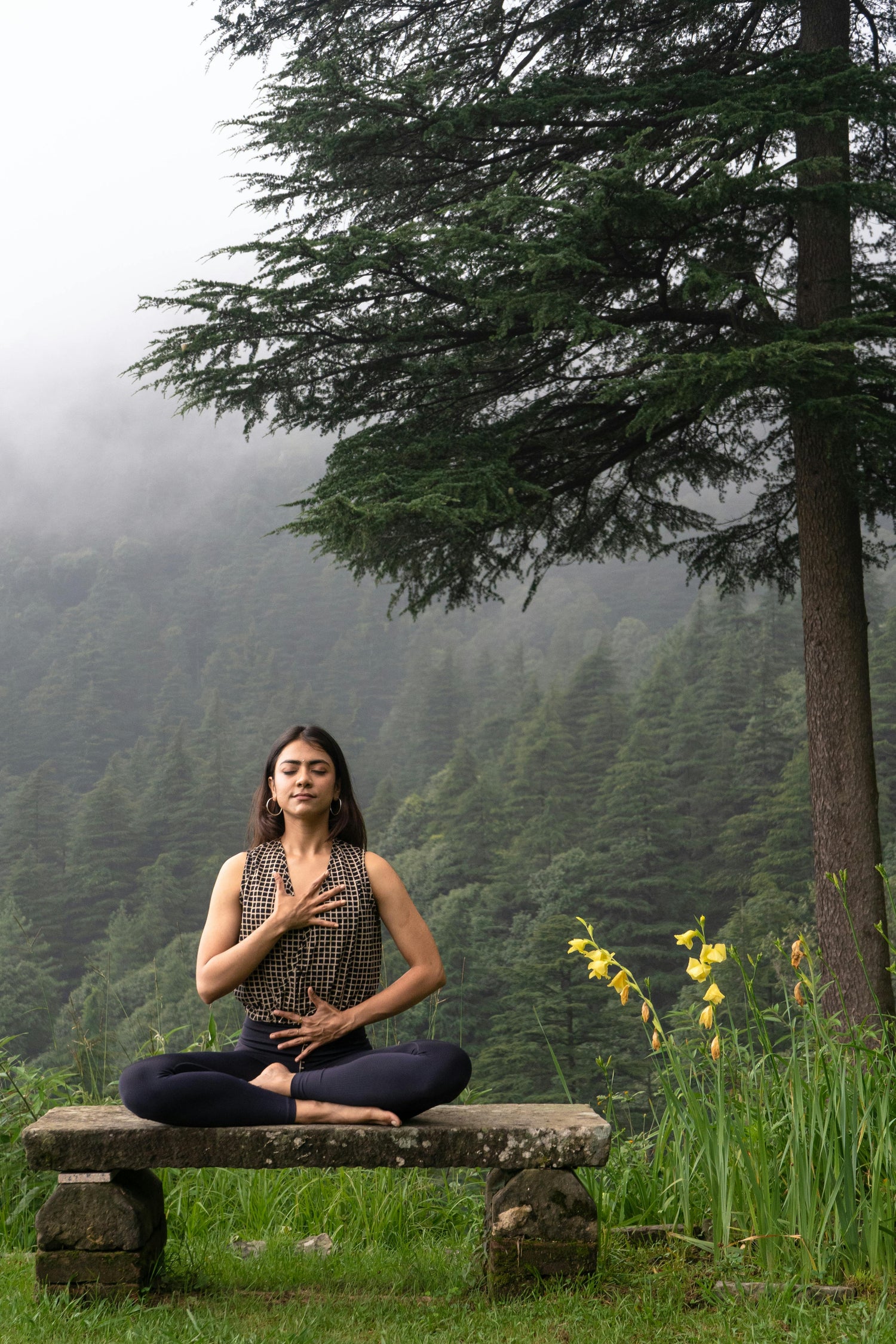
INTRODUCTION TO FREEDIVING FOR YOGIS AND YOGINIS
If you're a yoga practitioner and freediving intrigues you, it's important to start with a solid foundation, just like yoga. Freediving requires physical and mental preparation , and it's essential to progress smoothly to avoid unnecessary pressure. To begin, it's recommended to practice pranayama exercises before even getting into the water. Breathing techniques like Kapalabhati (Breath of Fire) or Nadi Shodhana (Alternate Nostril Breathing) help improve your lung capacity and develop conscious breath control .
When you're ready to practice freediving in the water, start with static apnea sessions, floating on the surface. Relax, let your body sink slightly into the water, and focus only on your breath. As in Shavasana or Child's Pose , learn to relax your body to stay calm. This first approach will teach you how to stay relaxed while holding your breath, an essential state for prolonging retention and fully enjoying the experience.
In dynamic apnea, where you swim while holding your breath, the goal is to minimize physical exertion while remaining in harmony with your breathing. It's similar to a fluid Vinyasa sequence, where each movement is coordinated with the breath to conserve energy. Don't try to go overboard at the beginning, but focus on the quality of your breathing and your ability to remain calm underwater.
Finally, as in yoga, freediving requires respecting your own limits . Be attentive to your body and your feelings. It is also important to practice in a safe environment , always accompanied or supervised. This discipline, like yoga, will help you develop a deeper connection with your breath, improve your concentration , and strengthen your mental resilience .
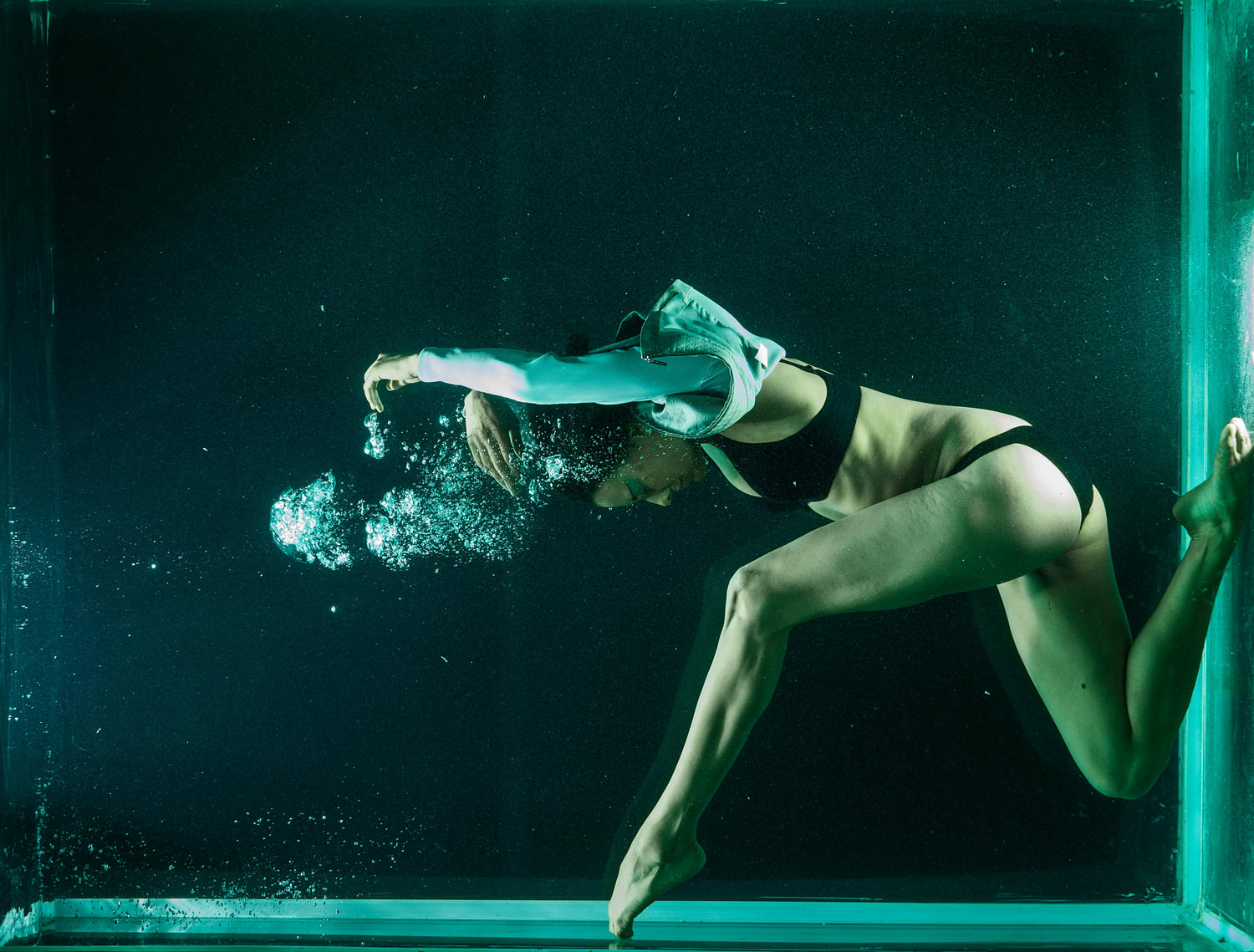
AN INNER JOURNEY TO EXPLORE THE BODY'S LIMITS WITH KINDNESS
Freediving, much more than a simple physical discipline, is an invitation to a profound inner journey . Underwater, the breathlessness and silence force you to return to yourself, a unique introspection that allows you to encounter your limits with kindness. As in yoga, where each posture confronts you with your flexibility and strength, freediving pushes you to explore your mental resilience and your ability to remain calm in the face of discomfort.
Imagine yourself submerged underwater, everything is calm, your breath is held, and you have to trust your body to get through this experience without panic. This moment of breath retention, when the need to breathe is felt, is comparable to the moments when, in yoga, you hold a demanding posture. This is where apnea becomes a mirror: it reflects your fears, your doubts, but also your ability to stay centered and manage discomfort .
Underwater, you learn to listen to yourself, to observe your body's signals without judgment. Every second becomes an opportunity to push your limits , not through force, but through kindness and acceptance . In the same way as in yoga, where you never force a posture but seek to accompany it, freediving teaches you to respect your abilities while gradually pushing them.
This underwater journey is above all an exploration of yourself , a moment to reconnect with your inner energy and develop a relationship of trust with your body . In freediving, as in yoga, you learn to stay present , to savor each moment, even when you touch the limits of your comfort. This practice allows you to approach these limits not with tension, but with a benevolent serenity , knowing that each immersion is an opportunity to learn and grow.
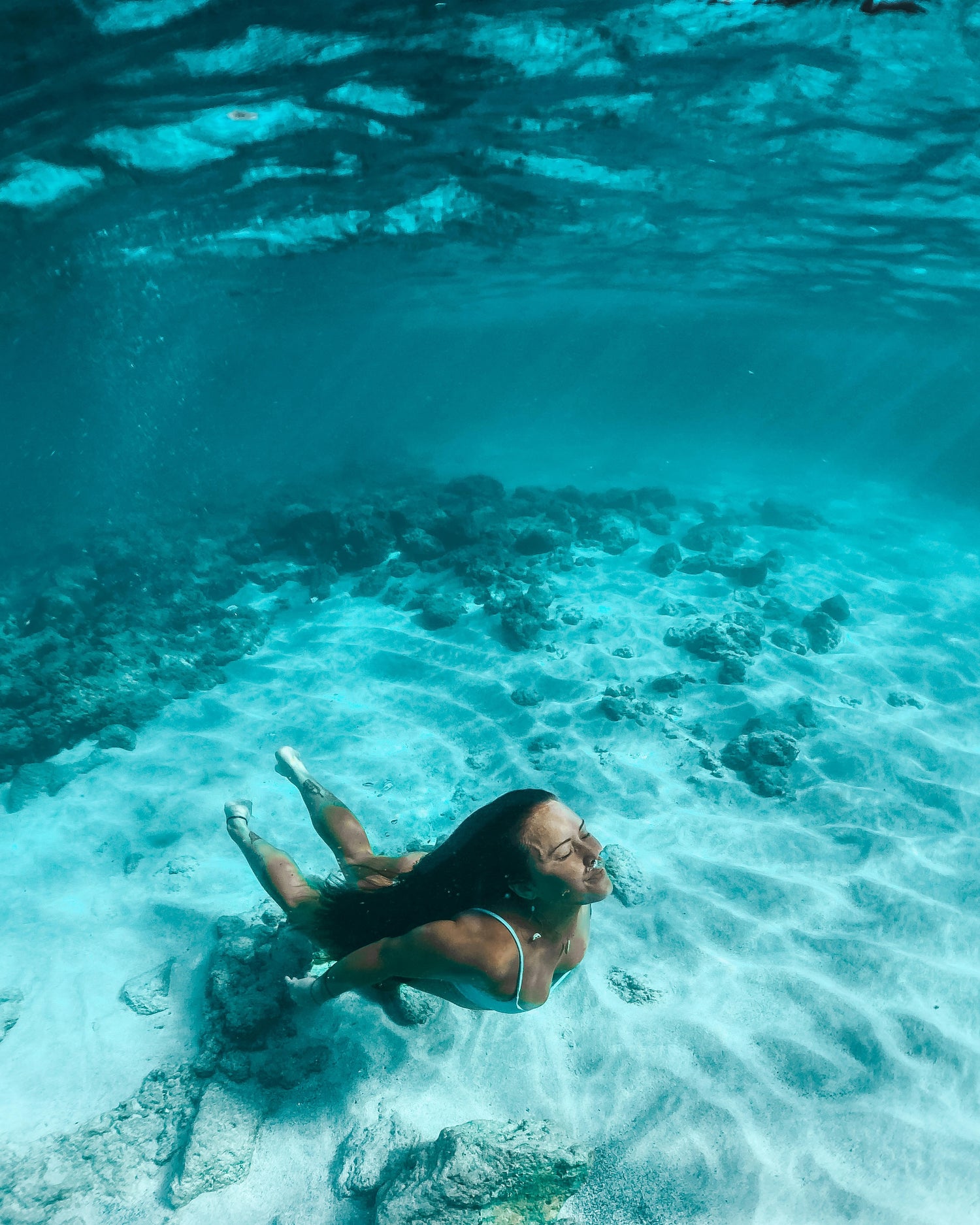
APNEA AS A GROWING GLOBAL PRACTICE, COMBINING PERFORMANCE AND WELL-BEING
Over the years, freediving has become much more than just a sport or recreational discipline; it has established itself as a universal practice , practiced and appreciated throughout the world. What was once reserved for a handful of explorers of the depths has transformed into an international community , attracting both thrill-seekers and wellness enthusiasts. More and more people are discovering the benefits of this practice on self-control , stress management , and reconnecting with one's body .
Today, freediving competitions are held in iconic locations such as the Caribbean , the Mediterranean , and even in swimming pools in major global cities. World-renowned athletes, such as William Trubridge , Alexey Molchanov , and Alessia Zecchini , are constantly pushing human limits, reaching dizzying depths and breaking records in static apnea. But beyond the sporting achievements, freediving attracts a wide audience, from yogis to health professionals, who discover in it a practice of mindfulness .
Freediving has also become a recognized therapeutic tool, used to treat anxiety , chronic stress , and even certain respiratory pathologies. Freediving retreats are springing up in exotic destinations like Bali , Hawaii , or the Greek islands , where participants learn to master their breath while exploring underwater wonders. These events bring together thousands of enthusiasts, all attracted by the transformative potential of this practice. Freediving has thus become a true way of life , influencing wellness practices like yoga, meditation, and holistic therapies.
The sheer scale of freediving worldwide is a testament to its profound impact on self-realization , while also providing an ideal setting for reconnecting with nature . From prestigious competitions to spiritual retreats, freediving continues to captivate, uniting human beings in a collective quest for inner mastery and underwater freedom .
Valentine's Bio
-

VALENTINE
1994, Reunion Island, Mauritius, a Life carried by the Indian Ocean and Yoga
Since childhood, this intrepid traveler has traveled the globe, leaving her footprints on beaches around the world.Passionate about surfing, scuba diving and sailing, she has made the oceans her playground and source of inspiration.
The freedom of the waves, the serenity of the ocean depths and the wind in his sails have punctuated his journey, always guided by a quest for connection with nature.
It was through her explorations that yoga became more than a practice for her – it was a way of life.
Between early morning surf sessions and meditative sunsets, she found in yoga a perfect balance of strength, flow and self-awareness.
Today, she combines her passion for water sports with teaching yoga and is part of the Yogaterrae team, here in France, in the South West and often remotely :)
This adventurer is a true source of inspiration for anyone who aspires to live in harmony with their body and nature.
Through her stories of incredible experiences, she invites everyone to open up to a world where every wave, every breath and every posture is a celebration of life.
More articles from Valentine...
-

HATHA YOGA
DISCOVER THE ARTICLEExplore the harmony of Hatha Yoga, where each posture stabilizes the body and calms the mind in all its splendor.
-

VINYASA YOGA
DISCOVER THE ARTICLEDive into the flow of Vinyasa, where each breath guides a movement toward balance and energy.
-

THE HISTORY OF THE CHAKRAS
DISCOVER THE ARTICLEExplore the chakras, these ancient mystical treasures, where each discovery reveals ancient and powerful wisdom!






